25 Years After: Reflecting on Change, Looking to the Future
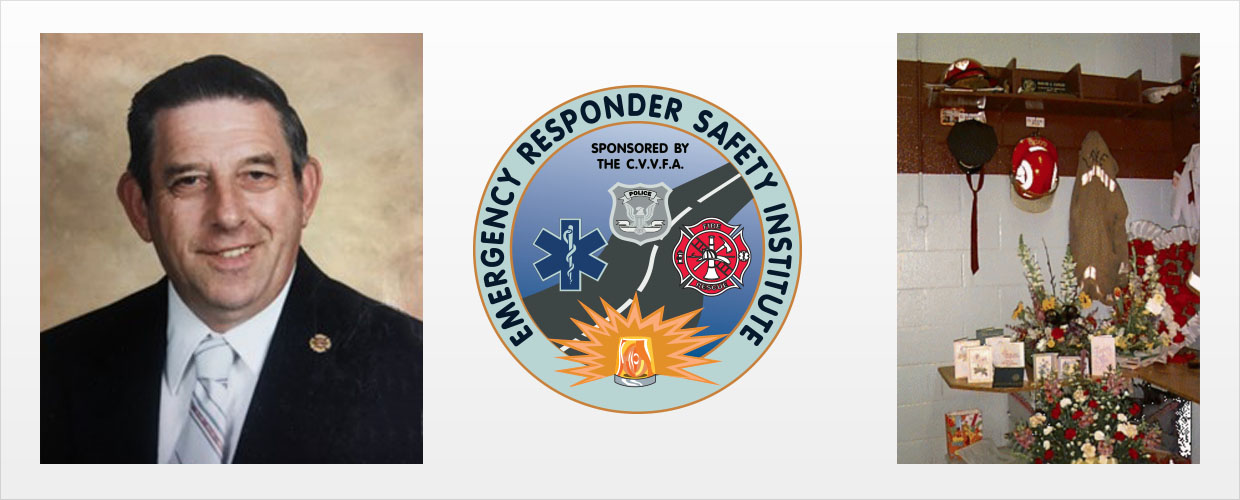
Twenty-five years ago this spring, the line-of-duty deaths at roadway incident scenes of Firefighter David John Good of the Lionville Fire Company in Pennsylvania (March 9, 1998) and Captain Joseph Kroboth Jr. of the Volunteer Fire Company of Halfway, Maryland (May 3, 1998) spurred the Cumberland Valley Volunteer Firemen's Association (CVVFA) to establish the Emergency Responder Safety Institute. Steve Austin and Joe Bukowski were the force behind the founding of the ERSI. These two LODDs so close together made them stop and say, "We have to do something about this." Simultaneously, Jack Sullivan was researching roadway incident safety on his own in the wake of the PA Turnpike Incident involving his department at the time. Jack saw an article about the CVVFA's work and reached out to Steve to combine their efforts. You can hear the story of the founding of the ERSI in the first episode of the ResponderSafety.com podcast.
In the 25 years since those tragic losses, the ERSI, its partners, and departments across the United States have fundamentally and profoundly changed how responders approach roadway incident safety and traffic incident management at emergency scenes on the roadway. While there is always more work to do, we felt it was important to pause on this anniversary and talk about how far we've come on this issue and where we need to go from here.
Jack Sullivan, ERSI Director of Training, spoke at the 25 anniversary commemoration of the Pennsylvania Turnpike Incident where Firefighter Good was killed. Jack is a past member of the Lionville Fire Company. This article draws from his remarks at the commemoration event.
The Turnpike crash involving Lionville Fire Co. personnel and Uwchlan ambulance members helped promote many positive changes over the past 25 years that have prevented other emergency responder line-of-duty deaths and injuries. Those changes have gone well beyond the fire and EMS community and have contributed to protecting other emergency personnel including law enforcement officers, towing and recovery operators, transportation and public works personnel, and others who respond to roadway incidents every day. The story of the PA Turnpike crash and how it affected the lives of the Good family and the lives of every firefighter and EMT at the scene that day and their families, and even the lives of those who responded to the secondary crash and their families, continues to resonate with emergency personnel in traffic incident management training sessions all over this country every day. More importantly, it motivates them to change and improve the way they operate at roadway incidents.
So, what are some of the positive changes that have taken place over the last 25 years?
In 1999, the Cumberland Valley Volunteer Fireman's Association (CVVFA), under the leadership of Steve Austin and Joe Bukowski, assembled fire service and law enforcement leaders from across the United States to discuss this newly recognized struck-by hazard facing emergency responders. From these conversations, the ERSI developed a foundational white paper as a roadmap to guide change in roadway incident response safety training and procedures. "Protecting Emergency Responders on the Highways" proposed a five-pronged approach to address the struck-by problem with specific recommendations to: 1) develop training; 2) improve operations; 3) create legislation, regulations, research, and national standards; 4) support human resources; and 5) enhance public education.
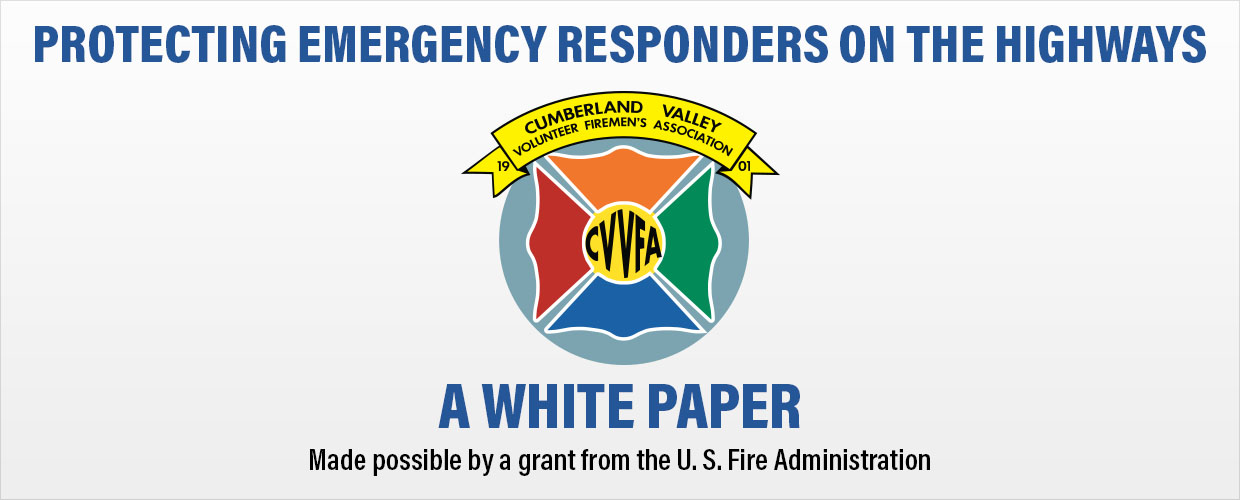
Shortly thereafter, the CVVFA established a committee called the Emergency Responder Safety Institute and developed a Highway Incident Safety Training program. Those actions were a direct result of the LODDs of FF Dave Good (Lionville Fire Company, PA) in March 1998 on the Pennsylvania Turnpike and Capt. Joseph Kroboth, Jr. (The Volunteer Fire Company of Halfway, MD) on I-81. The Highway Incident Safety Training developed by the Emergency Responder Safety Institute was the first formal attempt to inform firefighters about the dangers of working on highways and to recommend basic steps they could take to protect their personnel operating at incident scenes. Those initial steps included awareness training, wearing high visibility personal protective equipment when appropriate, using fire apparatus to set a block for the work area, and deploying advance warning devices like cones, flares, and signs. Jack Sullivan developed this initial training as a volunteer during his weekends and vacation days from his career job, traveling nationwide to deliver classes and workshops on behalf of the ERSI. Over the next few years, the ERSI continued to teach classes at fire service conferences, fire academies, regional fire events, and even at individual fire departments. Each class generated additional requests for more training classes in other fire departments.
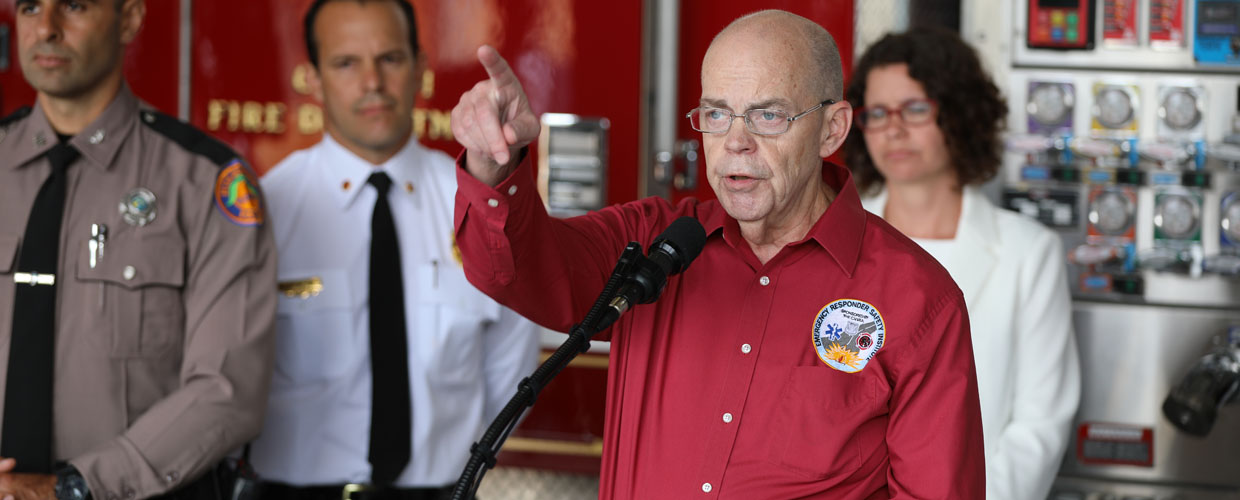
While the volunteers at the ERSI were busy, they also knew they were only getting the word out to a small percentage of fire departments nationwide. The Internet offered an opportunity to get the training and resources to many more responders than could be taught in person. In 2000, the ERSI established the website ResponderSafety.com to share the information we had gathered about roadway incident safety.

Dr. Harry Carter was the first ResponderSafety.com editor, contributing many articles. ResponderSafety.com became the trusted national hub for roadway incident safety and traffic incident management training, resources, news, and information. Stonehouse Media has been the developer for ResponderSafety.com since the beginning, contributing technical expertise, assisting with content development, and providing marketing and outreach.
In 2006, the Federal Highway Administration (FHWA) held a National Unified Goal Workshop in California and ERSI members were in attendance, including Fire Chief Joseph Kroboth, III, son of Joseph Kroboth, Jr. Chief Kroboth III gave an emotional presentation telling the story of the unfortunate day in May 1998. The Workshop included representatives from all disciplines that respond to highway incidents including firefighters, EMTs, police officers, towing & recovery operators, and safety service patrol personnel. It took three days of discussions (and arguments) until we could finally find common ground and established the National Unified Goal. The National Unified Goal for Traffic Incident Management is three major points: #1 - Responder Safety; #2 – Safe, Quick Clearance of Traffic Incidents; and #3 - Prompt, Reliable, Interoperable Communications.
In 2009, the FHWA added a chapter to the Manual on Uniform Traffic Control Devices for Streets and Highways that addressed the "Control of Traffic Through Traffic Incident Management Areas." That chapter provides guidance nationwide for how emergency responders should handle various levels of traffic incidents.
It wasn't until August of 2012 that the Federal Highway Administration developed what we now know as the "National Traffic Incident Management Training Program." It's the 4-hour class offered nationwide for free to all emergency responders who handle various types of roadway incidents. As of last month, 637,000 emergency responders nationwide have completed that training. That program includes an overview of the PA Turnpike crash and some clips of interviews with Lionville Fire Co. and Uwchlan Ambulance personnel.
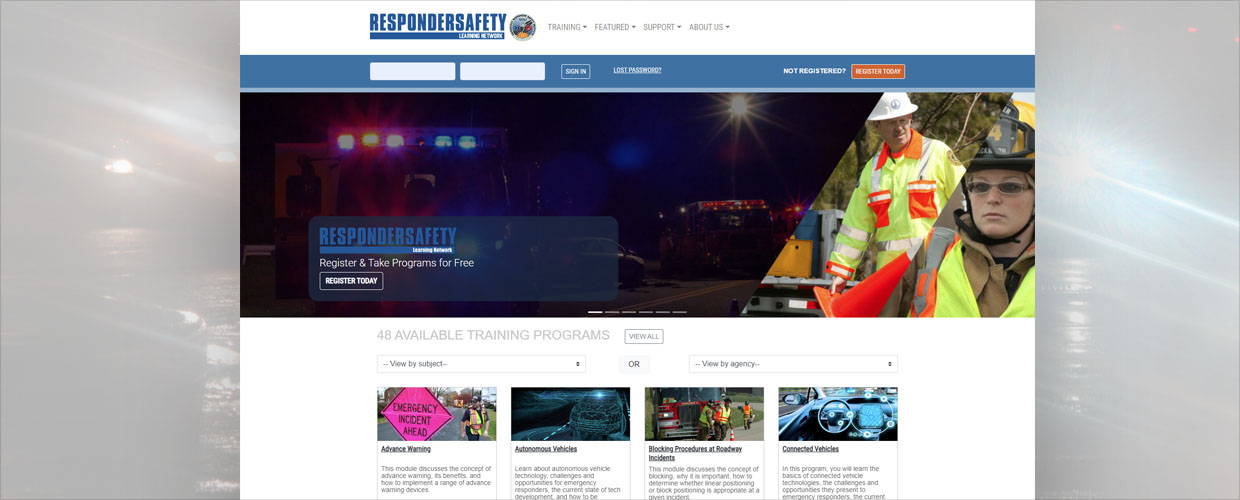
The Emergency Responder Safety Institute, working with Stonehouse Media's online learning platform, established the Responder Safety Learning Network in 2011 with online training modules about "Blocking Procedures at Roadway Incidents" and "Advance Warning". The first module, Blocking Procedures at Roadway Incidents, was a significant milestone that marked the ERSI's entry into online training, which at the time very few organizations were doing and no one was doing in roadway incident response. Jack Sullivan, Ron Moore, and Gary Millsaps were instrumental in developing the content for those first modules. Industry leaders like Allen Baldwin, who orchestrated the ERSI's first photo/video shoot on the roadway and contributed to developing the ERSI's early training, helped get access to locations and resources to record the footage needed to support online training. All Responder Safety Learning Network training is developed with volunteer subject matter expert groups who freely share their knowledge and experience for the benefit of others. The Responder Safety Learning Network now has 48 different training modules about all aspects of responding to roadway incidents and offers an online National TIM Training Certificate that is accepted as equivalent to attending the in-person class. As of May 2023, those modules have been completed a total of over 660,000 times. There are currently 130,000 registered students in the system and 44,000 National TIM Training Program Certificates have been issued through the Responder Safety Learning Network. RSLN.org's training is available 24/7/365 to anyone, anywhere, for free through grant funding from the U.S. Fire Administration.
Prior to the struck-by LODDs of FF Good and Capt. Kroboth, Jr., only one state in the nation had enacted a law to protect emergency responders on the highway, commonly known as a "Slow Down Move Over" or "Move Over" law. Members of the ESRI quickly recognized that passing this legislation in more states would be a major step toward expanding the roadway incident safety initiative. ERSI members canvassed the country at conferences and every speaking event available to share the message and promote the legislation at the state level. Fire Chief Joe Kroboth III personally spent more than three years traveling the country sharing his emotional message imploring legislators and transportation leaders to embrace the Slow Down Move Over legislation. Currently all 50 U.S. states have enacted some form of Slow Down Move Over statute. In its basic form, the law that requires motorists to move over one lane away from emergency personnel at highway incidents if it is safe to do so, and if they can't move over safely, that they must slow down while passing an emergency scene.
The ERSI's work has also brought changes in national standards. A chapter about Traffic Incident Management was added to the National Fire Protection Association 1500 Standard on Fire Department Occupational Safety, Health, and Wellness. In 2015, a new NFPA 1091 Standard for Traffic Incident Management Personnel Professional Qualifications was developed to establish the minimum qualifications a responder must hold to execute traffic incident management responsibilities.
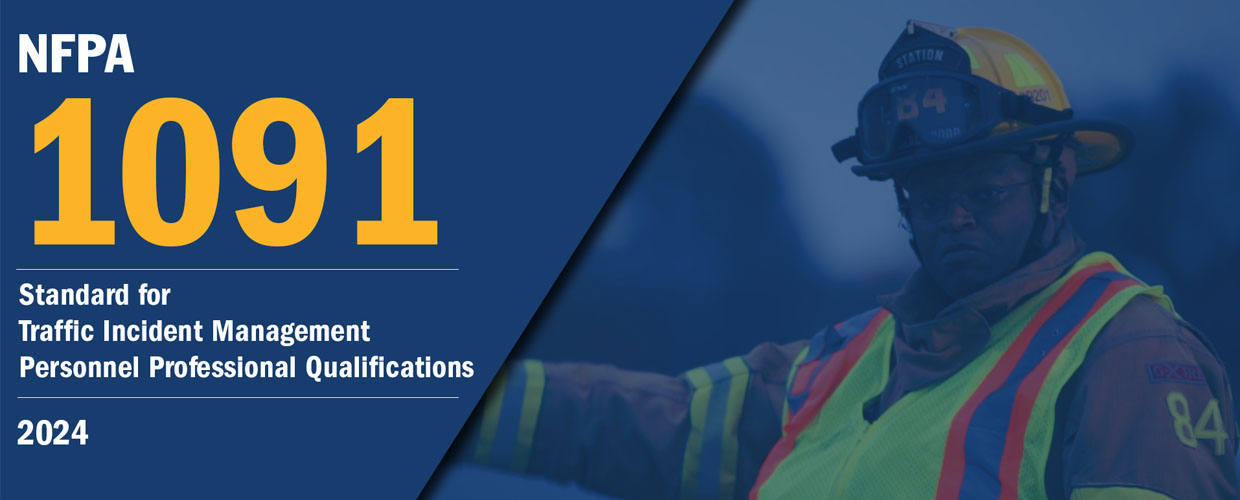
NFPA 1091 was founded from the guidance in the 1999 ERSI white paper and the industry's recognition of the continuing need for safe operations in traffic control. Today, the Fire Department Safety Officers Association offers the nation's only Pro Board-accredited certification to the NFPA 1091 standard for becoming a Certified Traffic Incident Management Technical Specialist. Through ResponderSafety.com, the ERSI developed the exam workbook and study guide for that certification test.
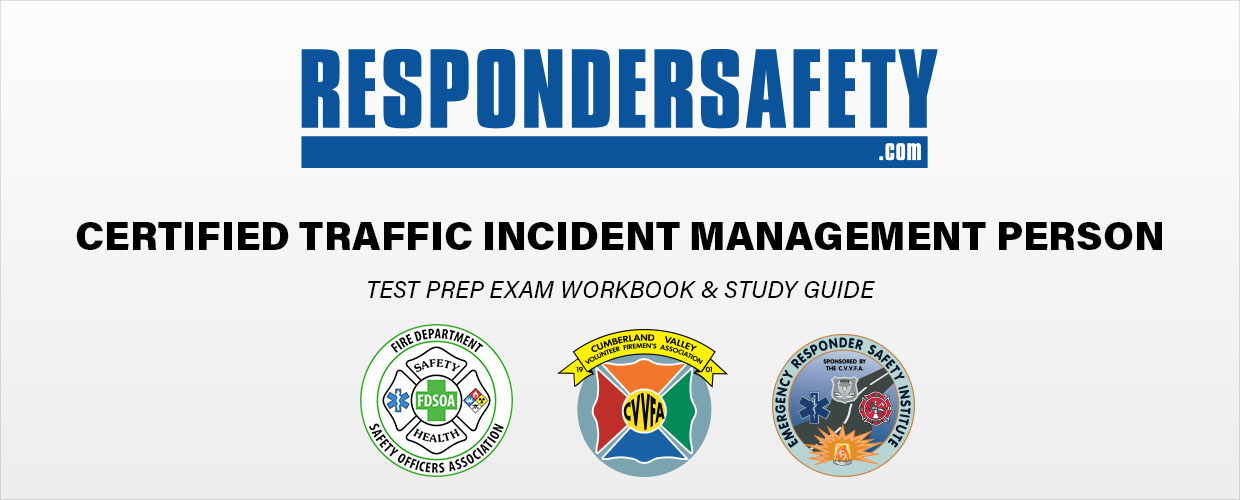
In 2023, a new design standard for roadway incident helmets developed with the participation of ERSI members will be released. Stay up-to-date on that on ResponderSafety.com's Helmets and Head Protection page.
Traffic Incident Management Teams and Committees have been organized nationwide to bring all the different responding disciplines together to train and collaborate on response procedures to highway incidents. There is better cooperation, collaboration, and communication between responding agencies than ever before. It's been several years since we last heard of a police officer arresting a firefighter at a highway incident because they couldn't agree on how the fire apparatus should be positioned at roadway incidents.
SOPs and SOGs have been developed and shared nationwide. New emergency vehicles lighting technology has been research and developed. Digital alerting systems, like HAAS Alert, have been invented and incorporated into many new emergency vehicles across all disciplines. Research and studies have been done to improve traffic incident management equipment, techniques, and procedures. There is much more emphasis on the dangers of working traffic incidents on the highway today, and training in roadway incident safety and traffic incident management for emergency personnel is readily available at no cost nationwide.
It is important to note that the work of ERSI members has been all volunteer, thousands and thousands of hours over 25 years. Since the founding, Steve Austin has been the ERSI and ResponderSafety.com project manager, guiding force, and unrelenting champion of responder safety and traffic incident management. Institutional support from the CVVFA and its members has sustained the ERSI when funding was hard to come by. Grants have funded technical services, project expenses, and travel costs. The bulk of grant support has been through FEMA/USFA's Assistance to Firefighters Fire Prevention & Safety Grant Program. These funds have been instrumental in expanding the ERSI's reach and developing hundreds of hours of training and supporting materials that are available free to anyone who seeks them. Additional material support has come from relationships with our many Partners in Progress. Two printers, Chip Lillie at Choice Marketing and Ernie Rojahn at The Pennsylvania Fireman, were early and sustained supporters of our printed materials and publicity needs.
With everything that has been done to protect emergency responders at highway incidents over the past 25 years, you might think that we would not see line-of-duty deaths or injuries anymore. Unfortunately, that is not the case. In just the last 4 years, 206 emergency responders were struck and killed by vehicles at roadway incidents, including 33 Fire & EMS personnel. That's an average of 51 emergency responders struck and killed each year. "Most of those fatalities are caused by what we call "D" drivers," Jack Sullivan says. "D" drivers are either drunk, drowsy, distracted, drugged, disgruntled, and/or disrespectful and if you have ever spent any time out on the road you have probably encountered at least one of those D drivers. They are everywhere and that means firefighters, EMTs and other responders need to always maintain situational awareness when working roadway incidents. A good defense is your best offense at roadway incidents."
If an average of 51 emergency responders are still being struck and killed every year at roadway incidents why bother with all of the training and procedures that have been implemented over the past 25 years? Sullivan asserts, "The answer is because if emergency responders weren't doing all these things, I am absolutely convinced that the number of emergency responder injuries and fatalities would be at least 5 times higher each year, and maybe even more. The members of the Lionville Fire Co., past and present, should be proud of the positive impact their history has had on all emergency responders nationwide. The Good family should take some comfort that the legacy of FF Dave Good is that his line of duty sacrifice has helped to motivate thousands of firefighters and EMTs nationwide to work differently at roadway incidents, which has in turn helped to save hundreds and maybe even thousands of lives. The memorial plaque we dedicated on the 25th anniversary serves to not only honor FF Good, but also to recognize the influence that his line-of-duty death has had in saving so many more firefighter lives across the country."
The many achievements and advances that Jack Sullivan enumerated in his speech and were expanded upon in this article have significantly improved the safety of responders and the motoring public on the roadways and have saved countless lives. But we know more must be done. "The achievements we have made together with a strong volunteer force and the support of a dedicated core team to develop training and resources are unparalleled in roadway incident response," Steve Austin reflected, "But the work doesn't stop. It evolves as society, technology, knowledgebase, and needs change. The ERSI and ResponderSafety.com continue to adjust and lead where we know we need to go. We adjust our focus to where it's needed most while never losing sight of the foundational training, education, and resources that must be consistently available so departments can implement roadway incident response safety recommended practices." Several focus areas continue to be actively developed, including:
- Data Collection and Analysis. As Jack Sullivan discussed in a recent editorial, "Where is the Data on Emergency Personnel Being Struck By Vehicles?", we have a serious gap in the data that is hampering our ability to understand why drivers continue to strike responders. Without robust data, we can't analyze where the problems are and craft programmatic responses. But now you can be part of the solution. Report any struck by incident (striking personnel or emergency vehicles) you know about to our database at ReportStruckBy.com.
- Helmets and Head Protection. Thanks to the initiative of Lt. Brady Robinette after a struck-by incident in his department, Lubbock Fire Rescue (Texas), helmets and head protection are back at the forefront. A new standard for a helmet for pedestrian roadway workers, which includes emergency responders, is in the final stages of development. Check our Helmets and Head protection page for updates, past history, and resources. When the standard is out, we'll add the information to that page.
- Emergency Vehicle Conspicuity High Visibility Marking. The work of the ERSI has influenced the placement high visibility markings like chevron striping on emergency vehicles to enhance the visibility for on-coming motorists. The system of striping is now part of the NFPA 1901/1900 standard for automotive fire apparatus.
- Emergency Lighting. Research in emergency lighting continues to look at many aspects of this issue, including lamp color, intensity, flash patterns, and driver behavior in response to different lighting schemes. Follow developments and download research reports from our Emergency Lighting page.
- Digital Alerting and Connected Vehicles. Connected vehicle technologies look like a promising way to improve safety by alerting motorists of roadway incidents and enabling responders to collaborate and coordinate more closely and easily. Learn about how these technologies work and their potential in the RSLN module, "Connected Vehicles." Stay tuned for more on ResponderSafety.com as we follow this developing technology.
- Autonomous Vehicles. Autonomous vehicles pose new challenges to emergency responders directing traffic and working at roadway incidents. The ERSI is working on new responder training in this area to add to the awareness-level RSLN module, "Autonomous Vehicles."
- Public Education. Despite the many improvements in how response agencies operate at roadway incidents, drivers continue to hit responders and apparatus. The public needs to be an active partner in reducing struck-by line-of-duty deaths through obeying Slow Down Move Over laws, eliminating distracted driving, avoiding or safely passing emergency scenes on the roadway, and implementing safe driving practices. Bob Cumberland, Doug DeHaven, Shelby DeHaven, and Meri-K Appy lead our public education team in the effort to make the public our partner in saving responder lives. For more on Responder Safety's public education effort and many teaching materials, please visit our Public Education and PIO page, our Distracted Driving Awareness page, and the RSLN module "Integrating Roadway Safety into Community Risk Reduction Programs."
- Continued Training and Outreach. We are continuing to spread the word about the available training and teaching materials in roadway safety and traffic incident management. Highlights from ResponderSafety.com's 2023 survey found that 71% of respondents felt traffic incident management training remained a critical need, interest in company drill lesson plans and sample SOPs was high, and that many departments are still not implementing basic safety practices consistently at every scene (blocking, advance warning, wearing helmets and high visibility apparel, establishing a traffic incident management area, safety briefings). We're continuing to push the available resources and modules so every department can provide the necessary safety training to their personnel. CVVFA members like Jerry Daniels, Candice McDonald, Todd Leiss, and Jack Sullivan continue to speak at major conferences like FRI and Firehouse Expo, staff exhibit booths, work with industry partners like the National Volunteer Fire Council and Federal Highway Administration, and teach at regional and state conferences.
We hope you will join us in these efforts. If you have specific questions, ideas, or would like to get involved, we'd love to hear about it. Please use our contact form to get in touch.
News Archive